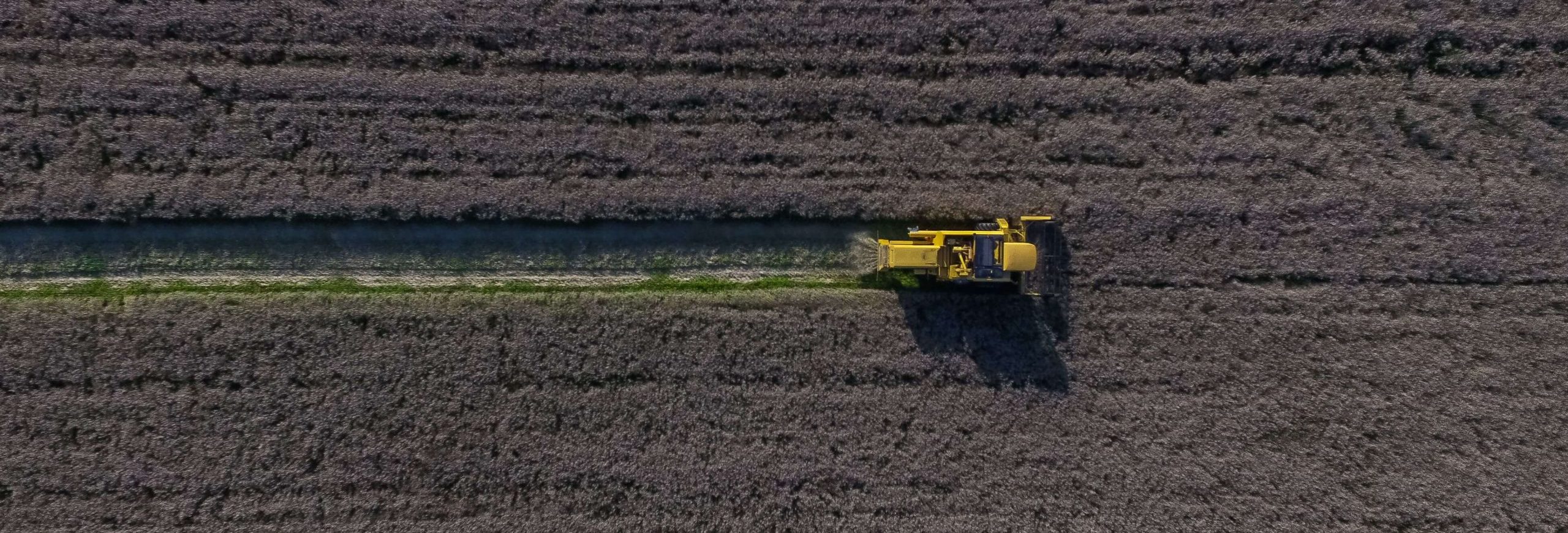Rapeseed is utilised in a revolutionary way in the new nutritional ingredient called BlackGrain. The raw material grows on bright yellow fields that bring much-needed variety and biodiversity to Finnish agricultural landscapes.
Apetit’s former Oilseed Specialist Fanni Heinonen describes the journey of BlackGrain’s raw material from seeds in the ground to a unique new ingredient for industrial food production. She is also a part-time farmer herself. This provides Heinonen with valuable hands-on insight into the different aspects of farming rapeseed in Finland.
BlackGrain from Yellow Fields™ is a true Nordic speciality
Two main species of rapeseed are cultivated in Finland: the globally widespread Brassica napus (rapsi in Finnish) and its petite Nordic cousin Brassica rapa (rypsi) which is primarily cultivated in northern Europe and Canada. The seeds of both species are a versatile raw material that is rich in protein, fibre, and high-quality fat.
– The Nordic rapeseed Brassica rapa requires a shorter growing period and offers slightly smaller yield potential but is especially reliable and well-suited to our short and mild Nordic summers.
Significant growth potential lies in cultivating rapeseed locally
Altogether, rapeseed is cultivated on about 30 000 – 50 000 hectares (74 000 – 124 000 acres) of farming land in Finland. There is an insatiable demand for domestic oilseed crops, which means local produce is guaranteed to have a secure Finnish buyer, according to Heinonen.
– Both species have great growth potential. An important part of my work is to promote the cultivation of oil plants and help farmers realise the benefits of farming rapeseed as part of their crop rotation.
From seeds in the ground to a refining process, where nothing goes to waste
The rapeseed plant is made up of leaves, stalk and the well-recognised yellow flowers that develop into silicles containing seeds after pollination. When ripe, the seeds are harvested with a combine harvester that collects the crop and shreds the rest of the dry organic matter back into the field, returning the nutrients to the land.
The seeds are then dried and transported to Apetit’s oil pressing mill in Kirkkonummi in southern Finland. The oil content of rapeseed is approximately 40% – the rest of the seed is pressed into nutritious animal feed and the newly developed rapeseed powder ingredient BlackGrain for human consumption. In this oil pressing process, nothing goes to waste.
Rapeseed offers distinct benefits for both farmers and the pure Nordic environment
Growing rapeseed has an important diversifying effect on crop rotation. Cultivating oil plants enriches the land for several crops to follow, thanks to a positive effect on soil structure and the substantial amount of nutrients that is returned to the ground. Both rapeseed species profit from insect pollination and the plants in turn provide an essential source of nourishment for wild and commercially kept bees.
Heinonen explains the importance of cherishing pure Nordic nature in farming:
– A responsible rule-abiding attitude is part of Finnish farming culture. Safe and sustainable practises benefit both the farmer and the ecosystem, and ultimately bring out the best customer value.
– If you walk or cycle past a yellow field in the summer, you will notice the plants are humming with insect life. One can literally hear agricultural biodiversity coming alive.

